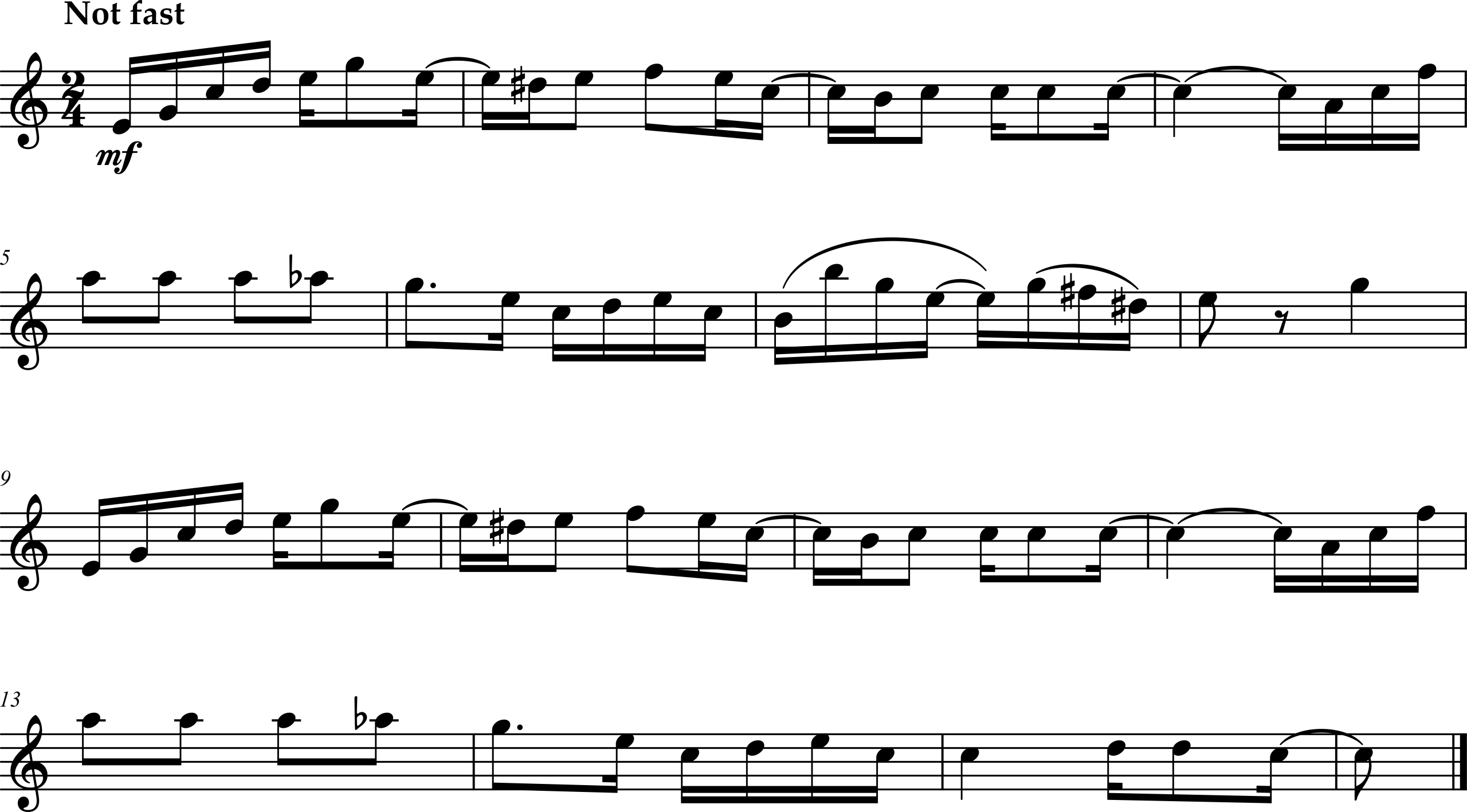E. Dotted Eighth Notes and More Ties
Ties and Dots: Part 2
This chapter rounds out our work with relatively straightforward rhythms in quarter-note-beat simple-meter time signatures. Here, we introduce the dotted eighth note and focus on increasingly syncopated rhythms using dots and ties. Dotted eighth notes are the main focus of Exercises 1E-1 through 1E-5, after which dotted eighths are mixed freely with other tied and dotted note values.
Exercise 1E-1: Antonín Dvořák, Symphony Number 9 in E minor, “From the New World,” Op. 95, Movement 2
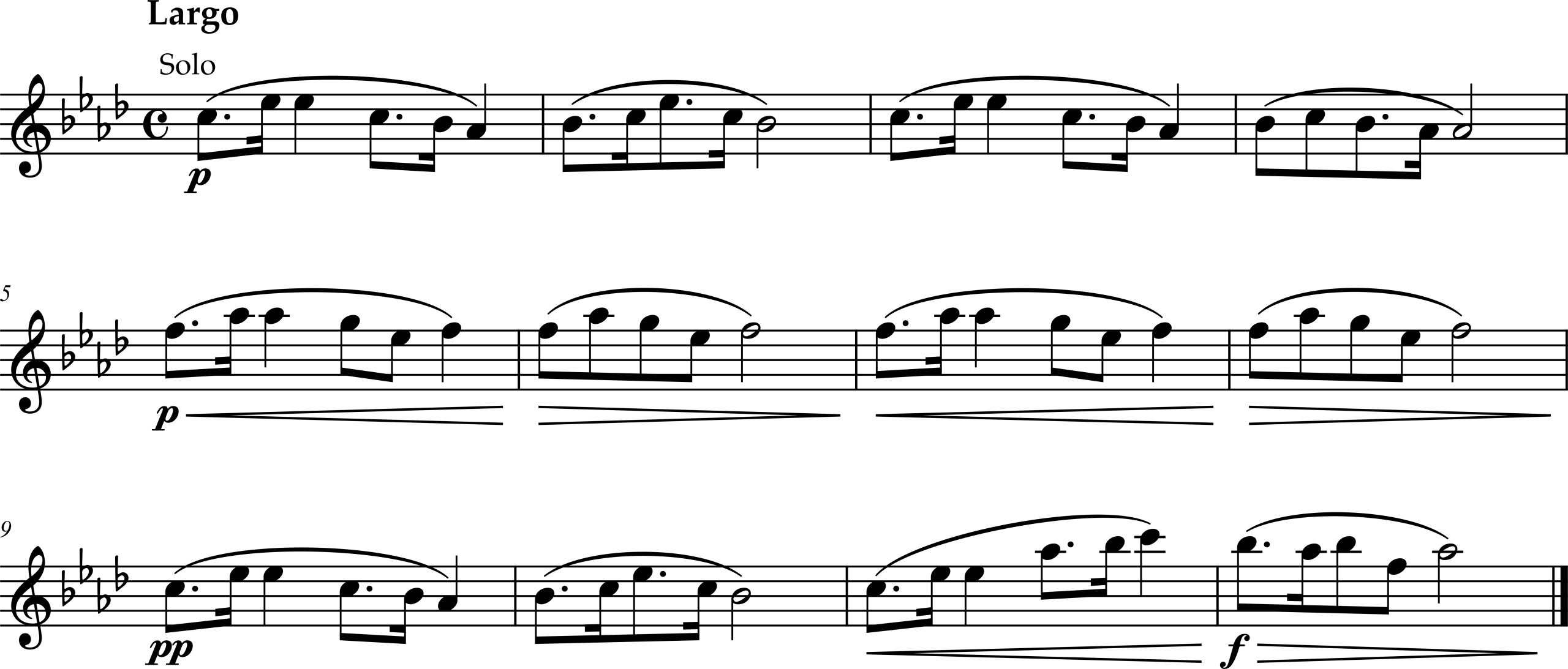
Exercise 1E-2: Jean-Baptiste Singelée, Saxophone Concerto, Op. 57
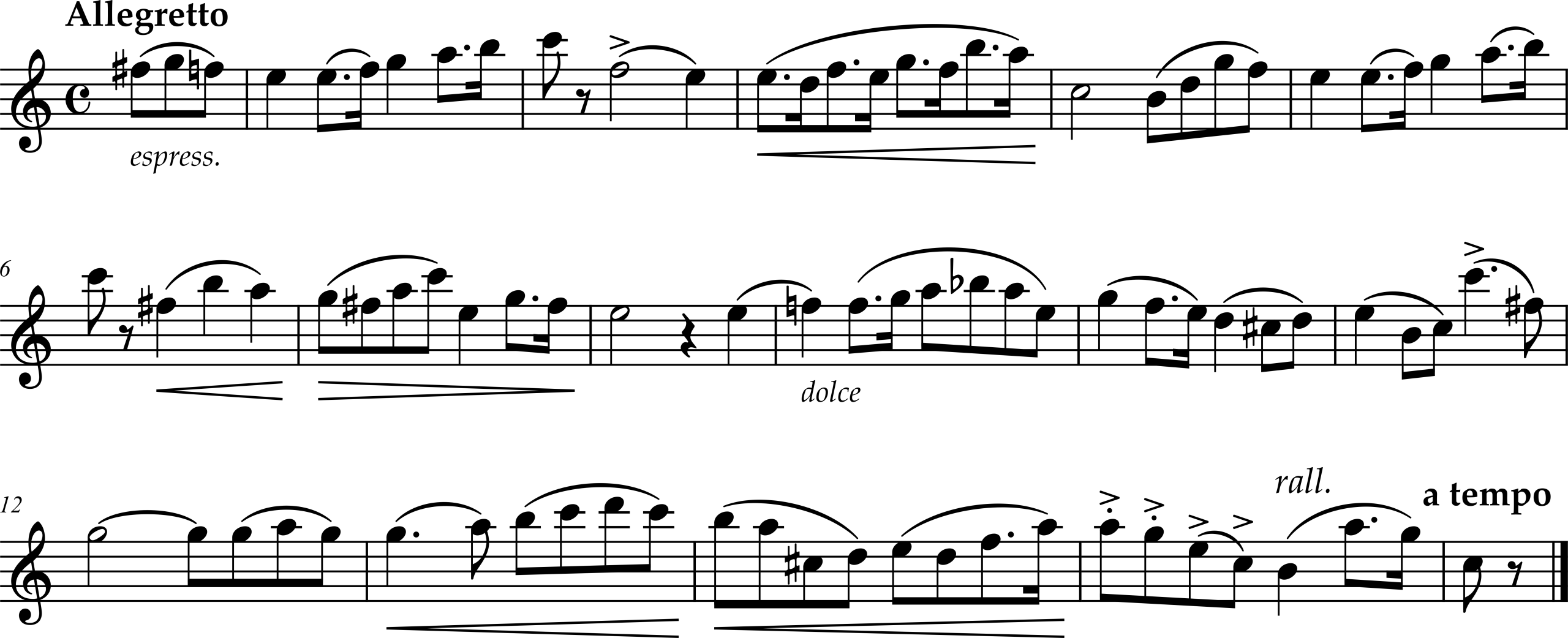
Though we have not yet covered thirty-second notes such as those found in measures 8 and 16, they are likely too fast to vocalize at the notated tempo anyway. We recommend choosing some sort of sustained sound, perhaps with rising pitch, to mimic the two melodic gestures.
Exercise 1E-3: Samuel Coleridge-Taylor, Violin Concerto in G minor, Op. 80, Movement 1
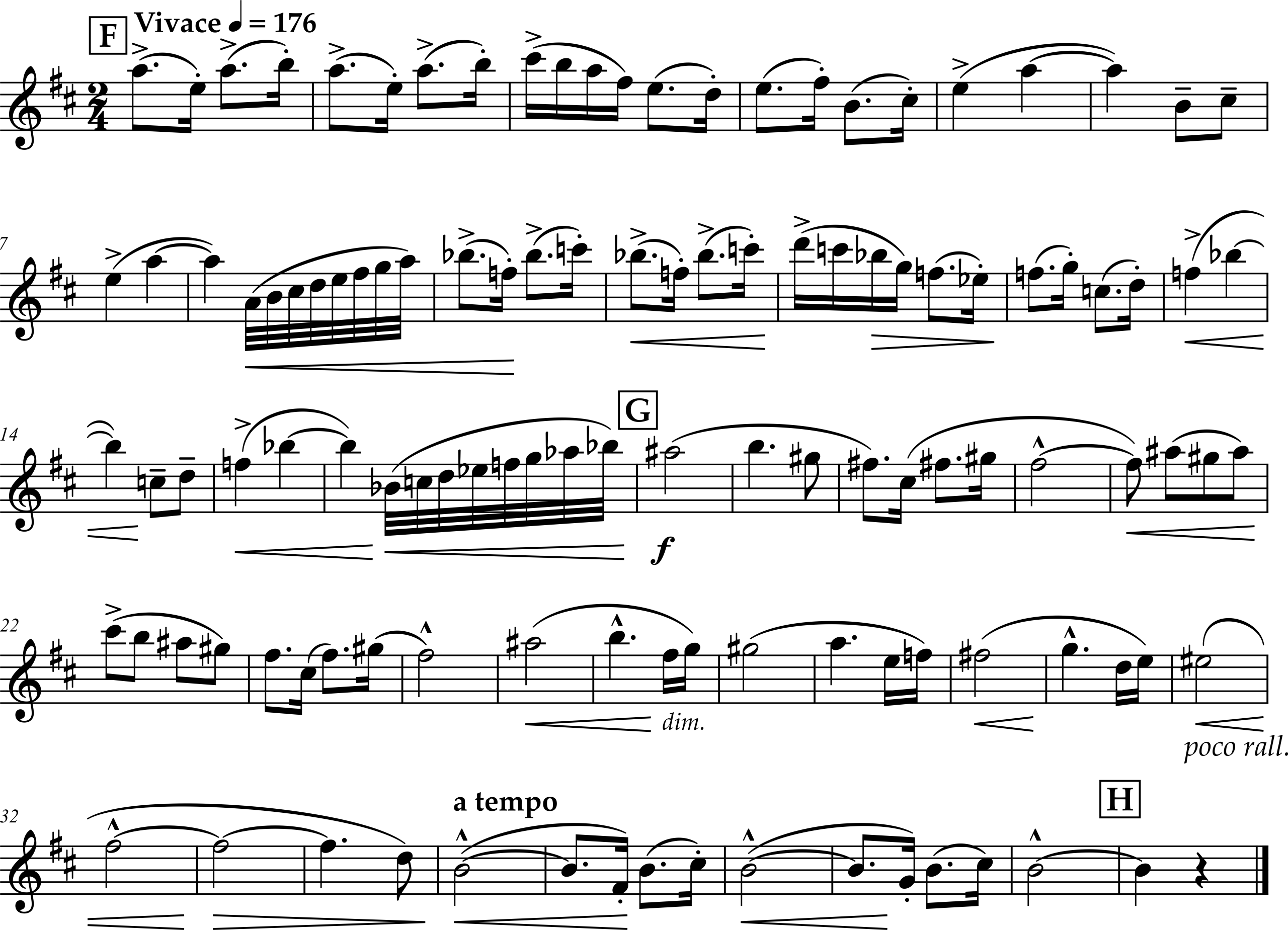
Exercise 1E-4: Johannes Brahms, Symphony Number 3 in F major, Op. 90, Movement 2
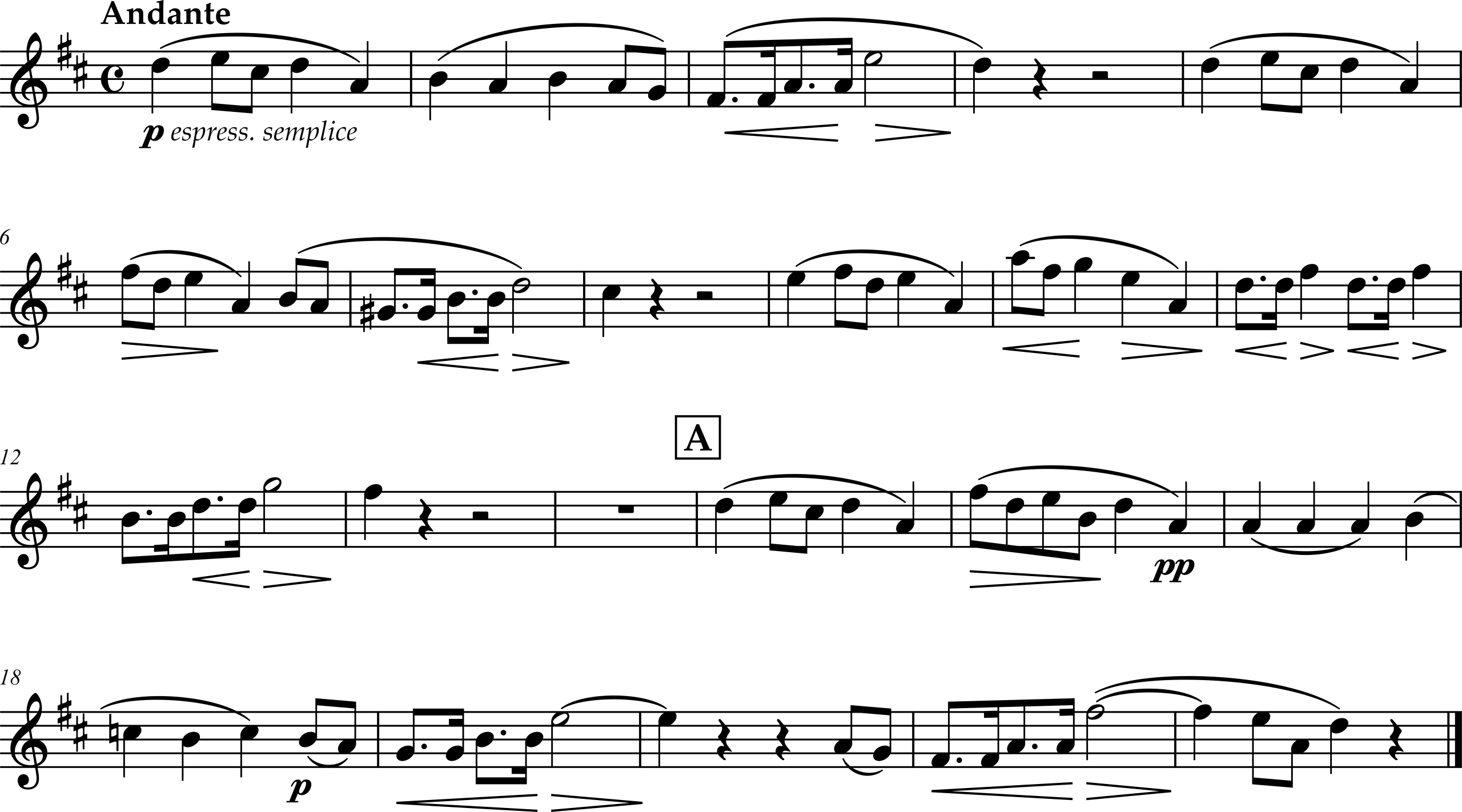
Exercise 1E-5: Wolfgang Amadeus Mozart, Serenade in E-flat major, K. 375, Movement 1
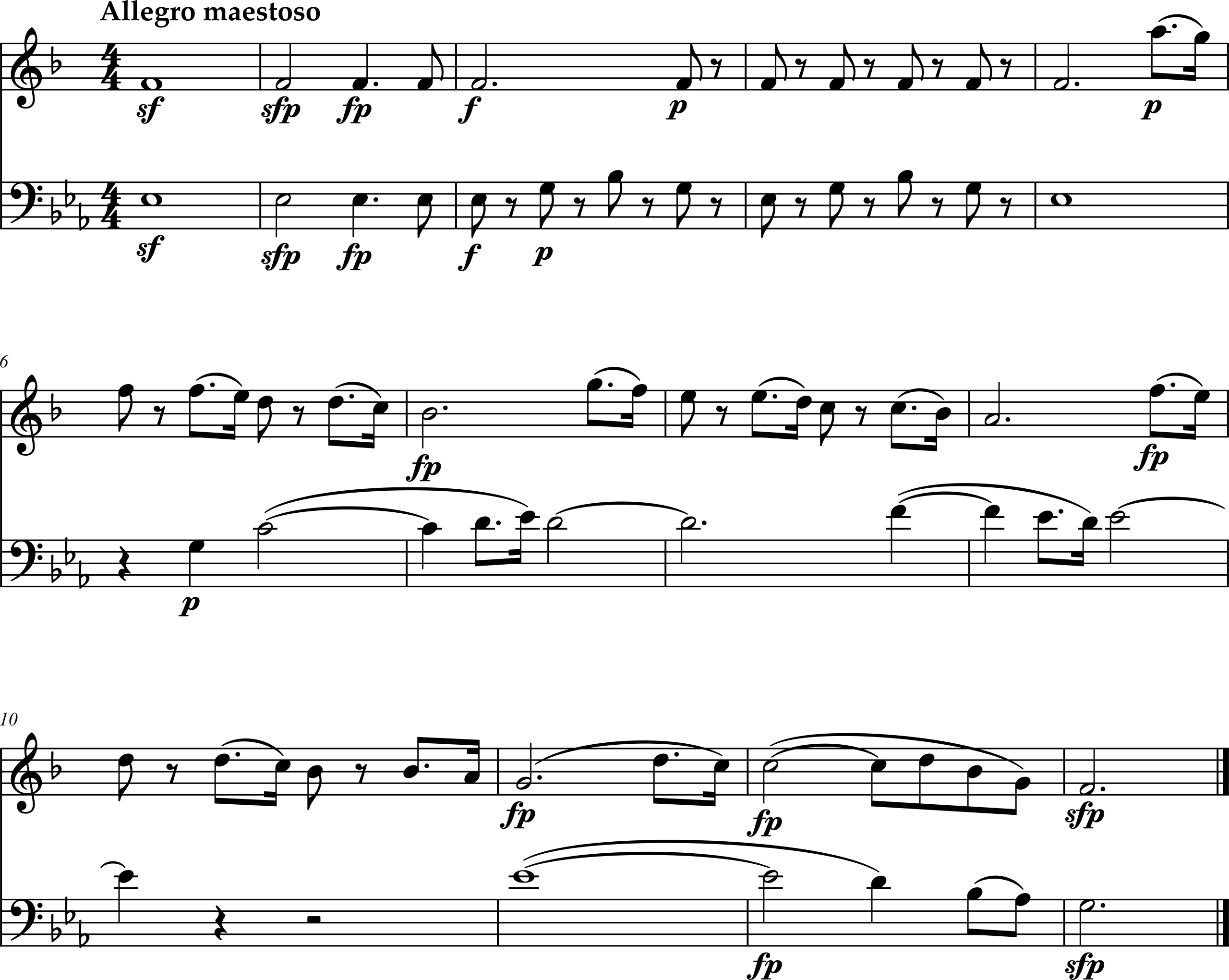
The first two measures of Exercise 1E-6 contain the relatively rare double dot, which adds an additional half of a half (a quarter) of the principal note value. In this case, a single dot would add a duration of one eighth note to the principal quarter note. The second dot, then, adds an additional half of the eighth note produced by the first dot—or in this case, a sixteenth note. To summarize, the full duration of a double-dotted quarter note is equivalent to a quarter note plus an eighth note plus a sixteenth note. Another way of notating the same rhythm is shown above Exercise 1E-6.
Alternate Notation for Exercise 1E-6

Exercise 1E-6: Lili Boulanger, D’un matin de printemps

Exercise 1E-7: Manuel Ponce, Two Mexican Songs, Number 2, “Estrellita”
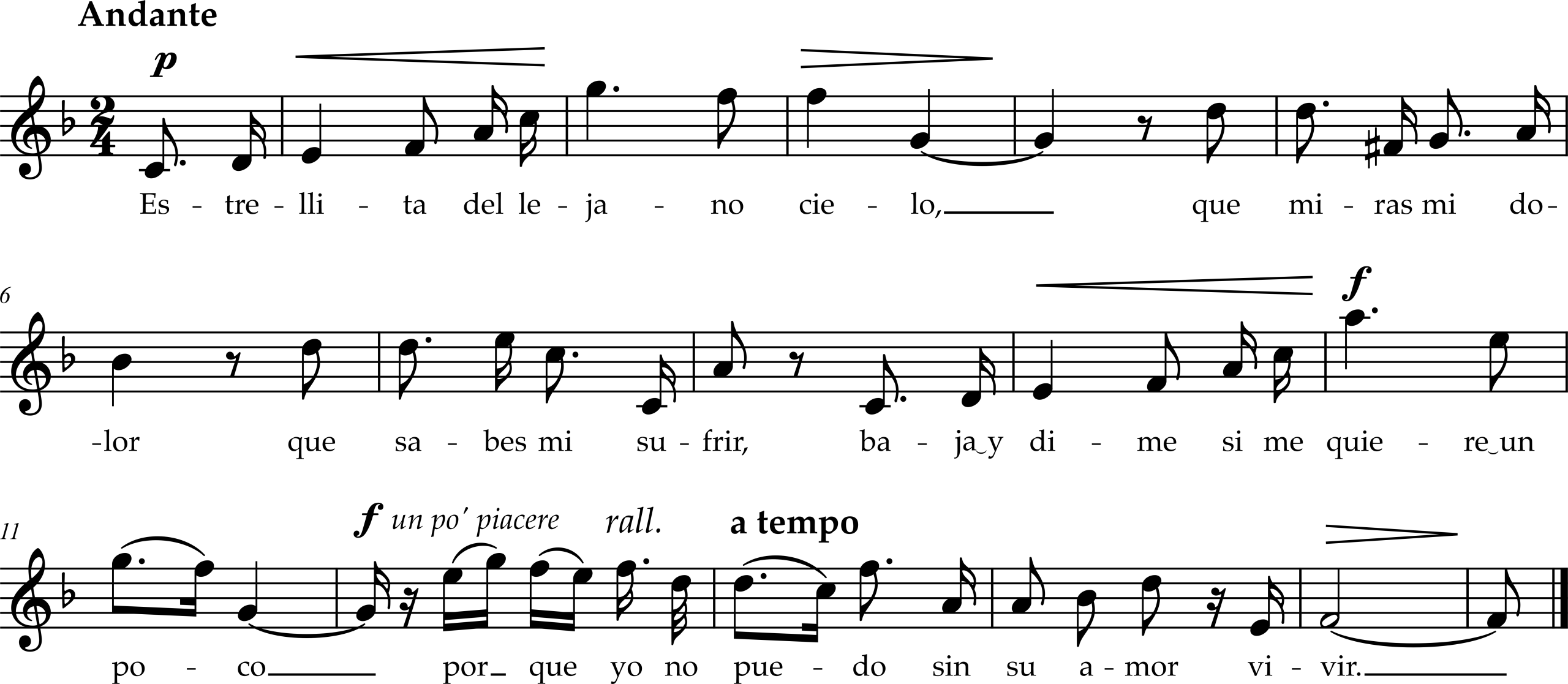
Exercise 1E-8: Ludwig van Beethoven, Leonore Overture No. 3, Op. 72b

Exercise 1E-9: Samuel Coleridge-Taylor, Three Impromptus, Number 1
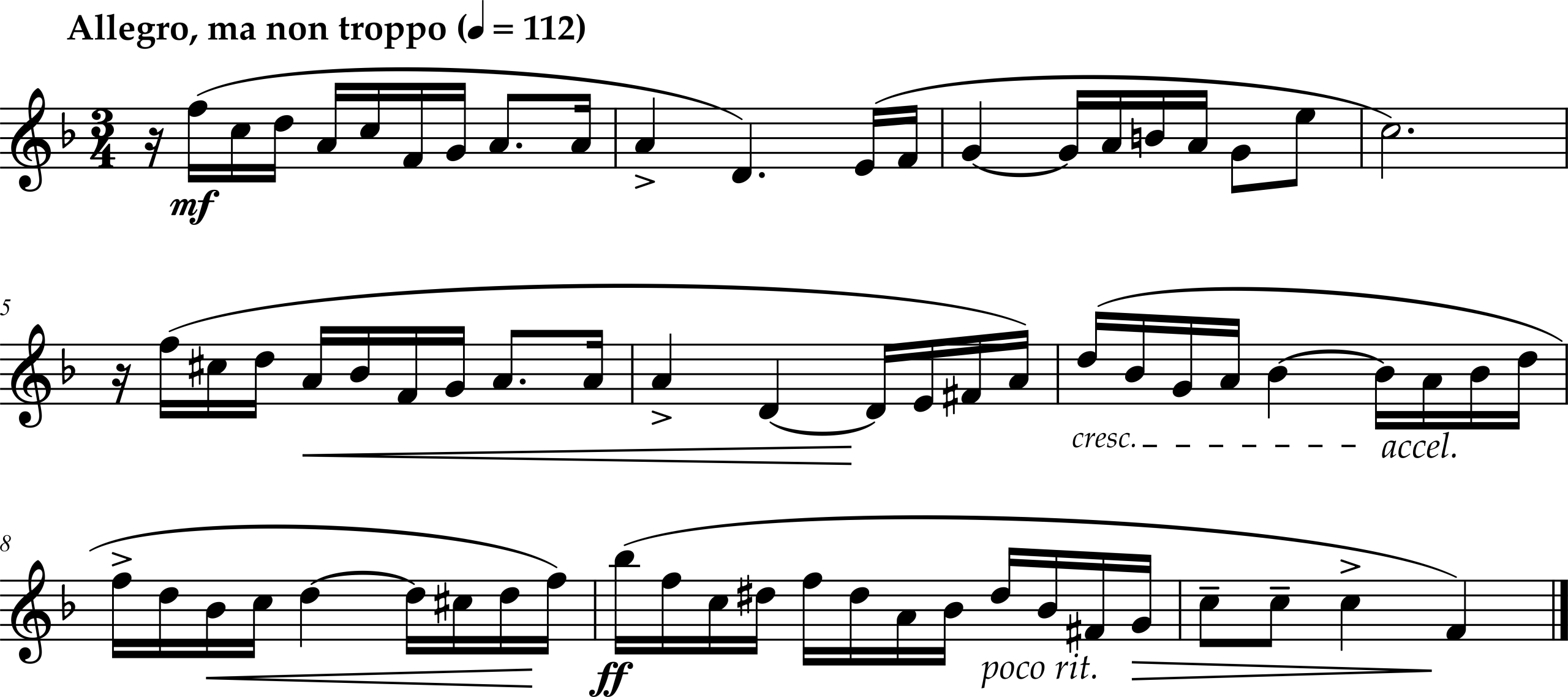
Exercise 1E-10: Gustav Holst, The Planets, Op. 32, Movement 4, Jupiter, the Bringer of Jollity

In Exercise 1E-11, note the use of duplets, which are made up of the number 2 surrounded by brackets in the first and third systems. This notation is common to show two notes taking place in the space of three, and we will encounter it more in Chapters 4 and 5. For now, feel free to imagine the rhythm of the duplet measures as if it were notated with a dotted quarter note followed by an eighth note tied to a quarter note. This is shown in the image below.
Alternate Notation for Exercise 1E-11

Exercise 1E-11: Richard Strauss, Ein Heldenleben, Op. 40
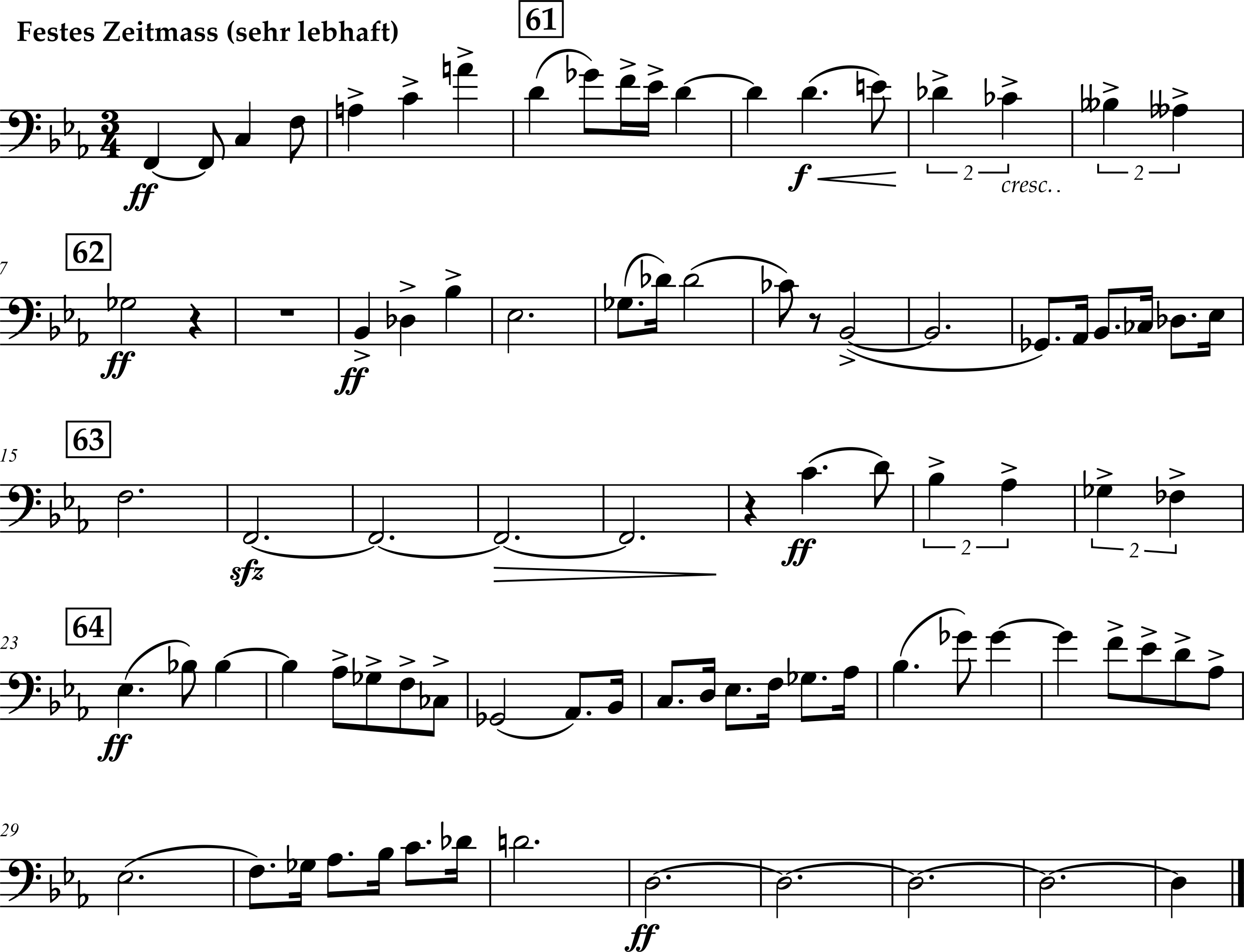
Exercise 1E-12: Adaline Shepherd, Pickles and Peppers
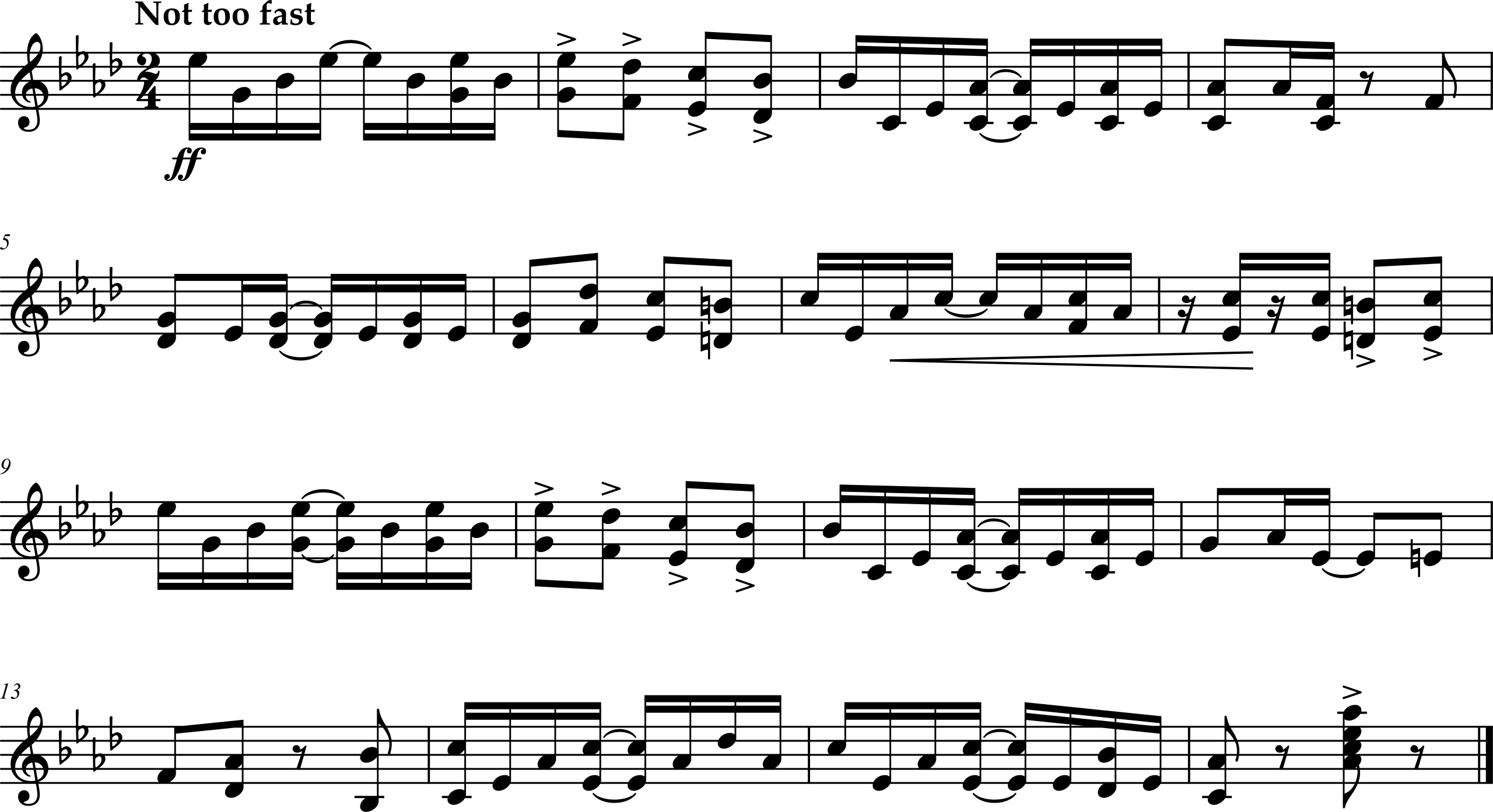
Exercise 1E-13: Scott Joplin, Weeping Willow
